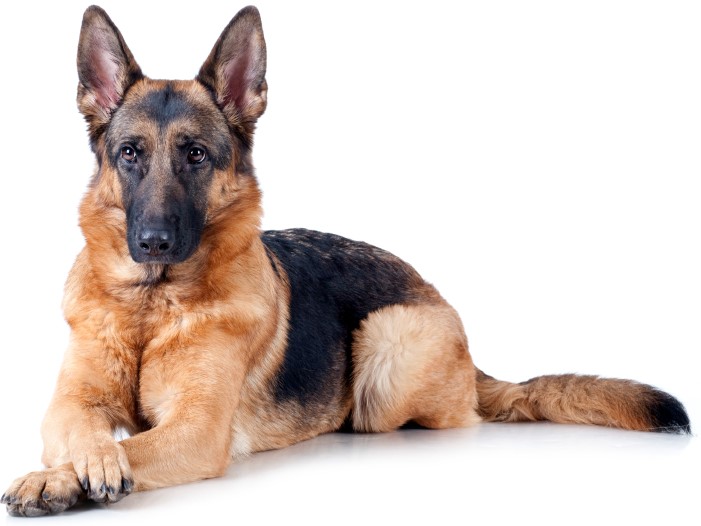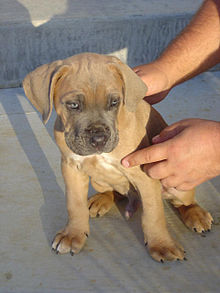The topic of how to break up a dog fight seems to evoke a wade-right-in, rather macho attitude in some people. But you don’t need to break up every dog fight, and there isn’t a single safe and perfect method of doing so. This week, how to tell when a fight is serious, and some ways to try to break it up, ideally without getting hurt yourself. -
Should You Break Up a Dog Fight?
Dog fights call for a disclaimer--oh, boy, do they. It’s inherently dangerous to intervene in a dog fight, or even a canine argument. Yet the reality is that if your own dog is involved in a serious fight or an attack, you’re going to feel a strong urge to protect him or to stop him from doing grave damage to another animal. So though the ideas I offer don’t exactly constitute advice, you may as well know what various people have suggested and tried. But always remember that you may get hurt.
Also, this article doesn’t cover aggression between housemate dogs. If your own dogs are fighting regularly or making frequent ugly faces at each other, get skilled, in-person help.
Let Loud Dog Arguments Take Care of Themselves
 I mentioned canine arguments above. Your ordinary dog-park squabble, in which the dogs move like lightning, roaring and snarling at the tops of their lungs, is a cue to stand back, get out of the way, and unbunch your undies. People say “The dogs would have killed each other if we hadn’t broken them up.” Actually, the dogs are talking trash. Almost always, if you leave them to their own devices, they either won’t hurt each other or will leave a couple of small punctures around the face, ears, and neck. The argument might last a minute from start to finish, though the time usually seems a lot longer to the people watching. Once the dogs are done, they’ll shake out their bodies and offer each other social reconciliation behaviors or just go about their business, paying each other no more mind.
I mentioned canine arguments above. Your ordinary dog-park squabble, in which the dogs move like lightning, roaring and snarling at the tops of their lungs, is a cue to stand back, get out of the way, and unbunch your undies. People say “The dogs would have killed each other if we hadn’t broken them up.” Actually, the dogs are talking trash. Almost always, if you leave them to their own devices, they either won’t hurt each other or will leave a couple of small punctures around the face, ears, and neck. The argument might last a minute from start to finish, though the time usually seems a lot longer to the people watching. Once the dogs are done, they’ll shake out their bodies and offer each other social reconciliation behaviors or just go about their business, paying each other no more mind.
Humans Can Make Loud Dog Arguments Worse
Often, though, several humans crowd in, shouting and screaming and grabbing at the dogs. These panicked, well-meant interventions not only amp up the dogs but put the people at risk of being bitten themselves. The dogs may be startled when a “third party”--a hand--appears behind or above them. Also, humans move so much more slowly than dogs. We get in the way of flashing teeth that otherwise would have been doing just that--flashing. Finally, if one dog has grabbed an ear or a fold of skin, being pulled away may cause him to clamp down and hold on. The result can be a bad tear when otherwise there wouldn’t have been any injury at all, or only a minor one.
Serious Dog Fights Are Often Quiet
In a real fight, you probably won’t hear the roaring and snarling that mark doggy trash talk. Both dogs may be dead silent. During a serious dog attack, the aggressor may be quiet while the victim dog screams. Some dogs may dart in and out, slashing at each other’s legs and bellies; others latch on and grind down. The victim may break free and try to escape, only to have the attacker go after him again. There’s no risk-free intervention we can make. I had a client with two Golden Retrievers, one of whom broke the other’s leg in an attack. The client tried to end the fight and the attacking dog then tore up her arm.
You Probably Won’t See Many Serious Dog Fights
Bearing the risk in mind, here are some of the suggestions I’ve heard. By the way, let’s forget about practice making perfect; unless you’re a dog fighter, or maybe you run a daycare
that doesn’t pre-screen the dogs, you’re not likely to see enough serious fights in your lifetime to develop much expertise. Most important is to keep your cool--a tall order, but panic makes you think less clearly.
How to Most Safely Break Up Dog Fights
[[AdMiddle]You’ll notice that several of the tips depend on your happening to have some device or object conveniently to hand. Because we all go around with air horns in our pockets, don’t we? Yes, setting off an air horn is one idea. And it’s a good one, if you have an air horn.
If a hose is available, spray cold water on the fighting dogs. Indoors, try a bucket of water. More portable than a hose is a canister of citronella spray, but you have to have it with you and most people don’t think it will stop a serious fight. Dropping a blanket over the dogs to startle and quiet them is safe and easy, if of course you have a blanket; whether a blanket will stop a serious fight is another question. Some people recommend shoving a board or a sheet of plywood between the dogs, which sounds implausibly difficult to me--and again, unless the fight’s conveniently located in your home workshop or a lumber yard, good luck finding a suitable piece of wood. Another tool-based recommendation I’ve heard is to hit a latched-on dog in the face with a hose or a heavy stick. This obviously has potential for grave injury to the dog, so don’t resort to it lightly--remember, those flashy, noisy arguments that scare the hell out of people are almost always resolved quickly by the dogs themselves. They don’t need us to quote-unquote help.
Potentially Effective but Dangerous Ways to Break Up a Dog Fight
The interventions that I think likeliest to stop a serious fight or attack are, unfortunately, also the most dangerous to you. One is to grab the fighting dogs’ tails and pull the dogs up like wheelbarrows until they’re clear of each other. That works better with at least one person per dog; the big risk is, of course, that either or both dogs will whip around and go after the person holding their tail. With short-tailed or dock-tailed dogs, you could grab a leg instead, but that brings your face and upper torso closer to the action.
Breaking Up a Serious Dog Attack Can Get You Hurt
I’ve been fortunate enough to witness only one attack in which I thought the aggressing dog was going for a kill. The attacking dog’s tenacity is burned into my mind. While the victim dog screamed, a friend and I picked up the attacker by her tail and hind legs, but even dangling in the air she hung on to the other dog. We kicked her and punched her to no effect. I finally ended the attack by grabbing the attacker’s collar and twisting it to cut off her air. When she couldn’t breathe, she let go. Can I recommend this as a tactic? Really, no; I was lucky not to get hurt worse than I did.
Remember, most of the time most dogs will come out of most dog arguments mostly unscathed, and if you keep out of it, you’ll be unscathed too. Take a deep breath and let everybody’s heart rate come down.
 If you want to further develop your own understanding of training a dog's protection drives, seek out a responsible group such as a local schutzhund club that emphasizes creating a well-rounded working dog. These dogs are tested for sound temperament and must learn to perform at a high level in tracking and obedience as well as protection work. Find a reputable club that is a member of a national or international schutzhund organization. Before joining, spend some time learning about their organization, talking to members, and watching training sessions to determine whether you have the commitment needed to seriously engage in this demanding dog sport.
If you want to further develop your own understanding of training a dog's protection drives, seek out a responsible group such as a local schutzhund club that emphasizes creating a well-rounded working dog. These dogs are tested for sound temperament and must learn to perform at a high level in tracking and obedience as well as protection work. Find a reputable club that is a member of a national or international schutzhund organization. Before joining, spend some time learning about their organization, talking to members, and watching training sessions to determine whether you have the commitment needed to seriously engage in this demanding dog sport.











